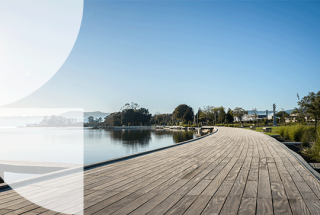New Process for Setting Speed Limits

New Process for Setting Speed Limits
Monday 16 May, 2022
The new Land Transport Rule: Setting Speed Limits 2022 comes into force on 19 May. These rules replace the existing Land Transport Rule: Setting of Speed Limits 2017 and change the process that Waka Kotahi, territorial authorities, and other road controlling authorities must follow when setting speed limits on their roads.
The 2017 Rule had been criticised for being slow and for creating inconsistencies. They required road controlling authorities to set speed limits through local bylaws and did not require integration between those decisions and other transport safety investments. The 2022 Rules look to remedy this by taking a whole-of-network approach where speed management is considered alongside investment in safety infrastructure.
The most significant changes made by the 2022 Rules are:
- The introduction of Waka Kotahi’s Speed Management Guide: Road to Zero edition to assist road controlling authorities to set speed limits. This Guide is expected to be published shortly.
- The creation of the centralised National Speed Limit Register (NSLR) to replace bylaws as the source of legally enforceable speed limits. Speed limits will be set in “records”. Existing speed limits can be ‘grandfathered’ into the NSLR by the territorial authority confirming them with Waka Kotahi. The NSLR will go live once the Rules go into force on May 19 2022. The Land Transport (Register of Land Transport Records: Speed Limits) Regulations 2022 come into at the same time as the 2022 Rules and dictate how the register will operate.
- The introduction of Regional Speed Management Plans. These Plans will be administered by regional authorities following consultation with their communities and input from the Speed Management Committee. These Plans will be reviewed every 3 years and will consider not only speed limits, but other speed management tools, such as cameras and other infrastructure.
- Establishment of a new Speed Management Committee and definition of its role in the creation of Regional Speed Management Plans.
- A particular focus on setting safer speeds around schools and kura.
- The introduction of MegaMaps as a spatial tool that shows the NSLR and the One Network Framework.
The speed management record and speed management plan requirements are both new tools under the 2022 Rule. The speed management record process requires action in the more immediate future, while the management plan development, consultation, and committee process will require attention in the longer term.
- Under the 2022 Rules, territorial authorities need to confirm, correct, or set speed limits for roads within their control by 19 July 2022, the end of the pre-interim period. Waka Kotahi will then create records accordingly. The existing speed limits will continue to apply in the meantime.
- A territorial authority may choose to create its own Territorial Authority Speed Management Plan ahead of participating in the compulsory Regional Speed Management Plan process.
More information on the various changes above can be found on the Waka Kotahi Website. If you have any questions about the new Rules, and what they require of you, please reach out to our Environment and Local Government experts, listed below.







